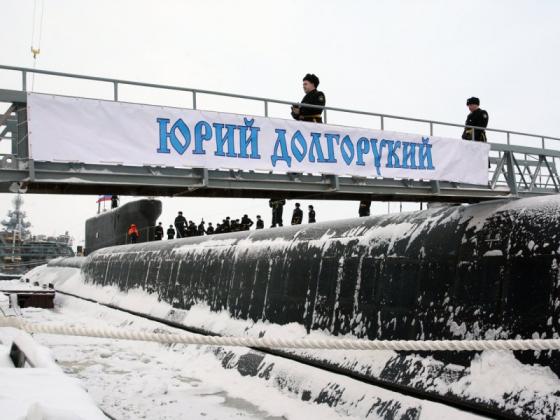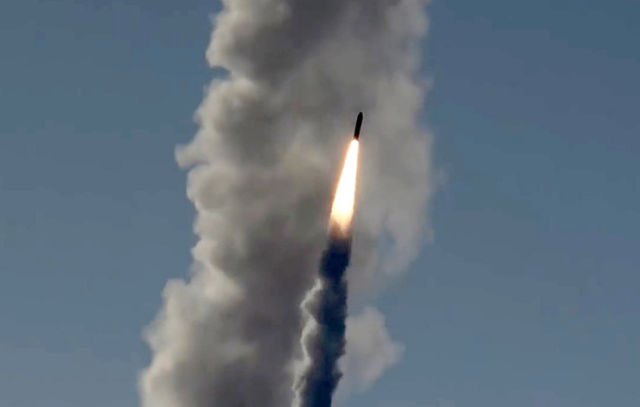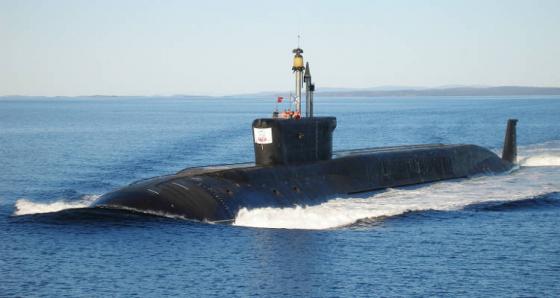We are talking about the creation of the first strategic nuclear submarine of the Borey project "The guarantor of the global security balance of Russia and its allies," Russian President Vladimir Putin called the nuclear submarine "Yuri Dolgoruky".
January 10 marked ten years since the first missile carrier of the XXI century entered the Russian Navy (Navy). January 10, 2013 was a historic day in the life of the Severodvinsk Sevmash plant (part of the United Shipbuilding Corporation), the fleet and industry as a whole. The raising of the St. Andrew's flag on this ship opened the era of the country's new nuclear submarine fleet — lower noise, more powerful and more digital.
The birth of the submarine
On the day of the withdrawal of the Yuri Dolgoruky submarine, Vladimir Zdornov, at that time general director of the Rubin Design bureau, said: "This ship, like a child, was born in agony." The first strategic missile carrier of the 4th generation was laid in 1996. It was a period when the economy began to collapse in the country, partner enterprises were closing down… But the management of Sevmash had no doubt that the plant would build this ship.
"The idea of building a strategic nuclear submarine of the 4th generation appeared in the mid-1980s. The resolution of the Central Committee of the CPSU and the Council of Ministers was issued in November 1985. The Central Design Bureau of MT Rubin, headed by General Designer S.N. Kovalev, has begun design surveys of the 4th generation nuclear submarines. Then there was stability in the country, the defense industry was on the rise," Mikhail Budnichenko, CEO of Sevmash, told TASS in an interview.
Only 11 years later, the laying of the ship took place — on November 2, 1996. "It was a borderline time for our company and for the further development of the entire fleet as a whole. As time has shown, the decision to build the Yuri Dolgoruky nuclear submarine was timely, which allowed us not to lose a lot: the cooperation of enterprises, human resources, in the end, people's faith in the future," Budnichenko said, noting that this was a great merit of David Huseynovich Pashayev, who headed the plant at that time.
According to him, the cooperation that existed within the framework of the Union Ministry of Justice was almost completely destroyed. "It was restored literally bit by bit — by joint efforts with the designer — the Central Design Bureau of MT Rubin, with the support of the Navy and the Ministry of Defense. At this critical time, the management of Sevmash and the design bureau were born with non-standard, talented technical solutions that literally saved the ship. The idea of using the groundwork for the hull structures of the unfinished submarines of Project 971 and 949A made it possible to advance in the construction of the Yuri Dolgoruky submarine. The formation of its corps was completed in 2004.
According to Budnichenko, the new leadership of the country, headed by Russian President Putin, began to pay due attention to national security issues and support for the defense industry. "I would like to note that Vladimir Vladimirovich visited Sevmash for the first time as prime minister in 1999 at the withdrawal of the Cheetah submarine from the boathouse, and two years later - in 2001 — he was present at the raising of the naval flag on this ship," said the head of Sevmash.
He also stressed that in the 2000s, the financing of the state defense order was established, a clear prospect for the construction of a 4th-generation nuclear submarine for the coming decades was built. "Sergey Nikitich Kovalev once said: "The country's leadership has come to understand that state interests must be protected by force, and not just by playing democracy." I am sure that there can be no Russian statehood without the creation of a strong fleet," Budnichenko said.
The value of the APL
The head of Sevmash is confident that the Yuri Dolgoruky submarine has opened the way for 4th generation ships. "January 10, 2013 was a historic day in the life of the plant, the fleet and the industry as a whole. We have all proved that unity and focus on results in any, even the most critical, circumstances is the way to success. Of course, this day was the happiest for us, factory workers, designers and sailors," stressed Budnichenko.
 |
| Acceptance into the combat structure of the Russian Navy by the nuclear submarine "Yuri Dolgoruky". |
Since then, two more Borey project submarines — Alexander Nevsky and Vladimir Monomakh - have been built and transferred to the fleet at Sevmash. The Yuri Dolgoruky sailed like an experienced ship. "A lot of things were completely new on it — the architecture of the hull, electronic weapons systems, modern technical achievements were used to improve the hydrodynamics of the hull," Budnichenko said. — The next two ships passed the slipway period much faster. Now all three ships are serving in the Northern and Pacific Fleets. We monitor their fate, carry out maintenance of our ships. Sailors highly appreciate the modern cruisers of the 4th generation."
It took four years to debug and test prototypes of the ship's weapons at sea. "According to my feelings, we walked along the edge of the abyss with this ship, behind which we could lose nuclear submarine shipbuilding," said Nikolai Semakov, the responsible deliverer of the Yuri Dolgoruky nuclear submarine. — In any direction, when we started working, we had to start everywhere from where it can be done, and where it can be taken, and how it will work. And now it's probably no secret that the end of many OKRov (development work — approx. TASS) was simply transferred to the ship, and the fact that this cooperation was launched at one time — after all, it was also quite difficult. When all this half-baked stuff, let's say, came to the ship, and all this happened already on the ship, in parallel with our work, in parallel with the preparations for the tests."
On January 10, 2013, simultaneously with the raising of the naval flag on the Yuri Dolgoruky, the intercontinental ballistic missile (ICBM) R-30 Bulava, the main weapon of submarines of this class, was put into service. At the same time, its flight design tests continued for several more years. Nevertheless, the "Mace" has proven its efficiency and effectiveness. According to open sources, the ICBM is a three-stage solid-fuel missile capable of carrying six individual guidance combat units. The total throwable weight is 1,150 kg. Each submarine of the Borey and Borey-A projects is capable of carrying up to 16 such missiles.
 |
| Multiple launch of ballistic missiles "Bulava" from the submarine "Yuri Dolgoruky" in May 2018. |
| Source: © Press Service of the Ministry of Defense of the Russian Federation/TASS |
Currently, the line of "Boreas" has been continued by ships of the modernized series. According to the Borey-A project, Sevmash built and handed over to the fleet three ships — Prince Vladimir, Prince Oleg and Generalissimo Suvorov. "There are several more submarines of this series at different stages of construction. The construction of the line of ships of the Borey and Borey-A project can be called an outstanding achievement of the domestic defense industry, symbolizing the beginning of a new stage in its development. The creation of these ships demonstrates our country's ability to maintain the potential of its strategic nuclear forces at a modern level and implement complex technological programs on a national scale," Budnichenko said.
Roman AzanovTASS thanks the Sevmash press service for their help in preparing the material

